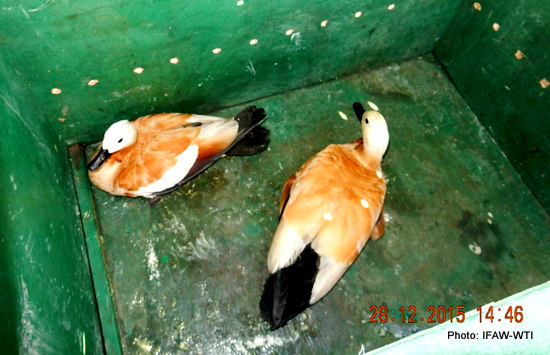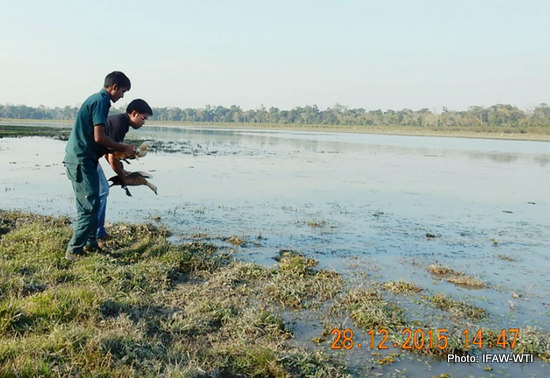Poisoned Ruddy Shelducks Treated and Released in Kaziranga
Kaziranga, December 28, 2015: A pair of ruddy shelducks under treatment at the IFAW-WTI run Centre for Wildlife Rehabilitation and Conservation (CWRC) was released in Kaziranga National Park on December 28, 2015. The ducks were released near a water body in Agoratoli forest range of Kaziranga National Park by the IFAW-WTI MVS team led by Dr Biswajit Boruah.
On December 26, 2015, Ajay Sharma, a conservationist from Sonitpur district found six ruddy shelducks in comatose state in Bedeti area of Sonitpur district in Assam. He immediately informed the CWRC team which rushed to the spot.
Following the inputs of Dr Sanjay Gohain and Dr Rupam Dutta, research fellows doing a project on ‘Viral metagenomic profiling of native and migratory aquatic birds in NE region’, the team attended to the case. Gohain and Dutta are working closely with the IFAW-WTI team and provide assistance and inputs on a regular basis. When the team reached there they found that it was a case of suspected poisoning and three of the six ducks had succumbed while one flew away.
They took the remaining ducks to CWRC and provided necessary treatment and care. These migratory birds responded well to the treatment and both the male and female were able to move around comfortably. After two days, when they seemed fit to fly they were released by the IFAW-WTI MVS team in the wetlands of Kaziranga National Park.
The ruddy shelduck (Tadorna ferruginea), known in India as the Brahminy duck, is a member of the family Anatidae. It is a migratory bird, wintering in the Indian subcontinent and breeding in south-eastern Europe and central Asia, though there are small resident populations in North Africa. It has a loud honking call and mostly inhabits inland water-bodies such as lakes, reservoirs and rivers.











